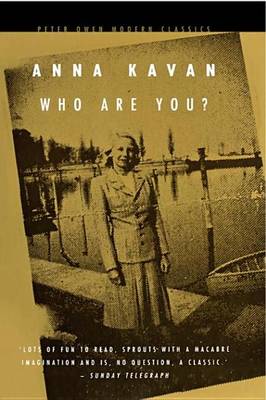Peter Owen Modern Classic
4 total works
In this, a recently discovered manuscript from Kavan's late period, a tragic love story unfolds against a visionary landscape. This is less a tale of unrequited love than an exploration of divided selves, momentarily locked in an unequal embrace. Passion is revealed as a play of the senses, as well as a destructive force.
Depicting the hopeless, emotional polarity of a young couple, this novel follows their doomed marriage spent in a remote, tropical hell. She--described only as "the girl"--is young, sophisticated and sensitive. He, "Mr. Dog-Head," is an unreconstructed thug and heavy drinker who rapes his wife, otherwise passing his time bludgeoning rats with a tennis racket. Together with a visiting stranger, "Suede Boots"--who urges the woman to escape until he is banished by her husband--these characters live through the same situations twice. Their identities are equally real--or unreal--in each case. With slight variation in the background and the novel's atmosphere, neither the outcome nor the characters themselves are quite the same the second time. The constant question of the jungle "brain-lever" bird remains unanswered: "who are you?"
A largely autobiographical account of an unhappy childhood, Sleep Has his House startled with its strangeness in 1948. Today it is one of Anna Kavan's most acclaimed books. A daring synthesis of memoir and surrealist experimentation, Sleep Has His House charts chronologically the stages of the subject's gradual withdrawal from all interest in and contact with the daylight world of received reality. Brief flashes of daily experience from childhood, adolescence and youth are described in what Kavan terms 'night-time language' - a heightened, decorative prose that frees these events from their gloomy associations. The novel suggests we have all spoken this dialect in childhood and in our dreams, but these thoughts can only be sharpened, or decoded by contemplation in the dark. Anna Kavan maintained that the plot of a book is only the point of departure, beyond which she tries to reveal that side of life which is never seen by the waking eye, but which dreams and drugs can suddenly illuminate.
She spent the last ten years of her life literally and metaphorically shutting out the light; the startling discovery of Sleep Has His House is how much these night-time illuminations reveal her joy for the living world.
She spent the last ten years of her life literally and metaphorically shutting out the light; the startling discovery of Sleep Has His House is how much these night-time illuminations reveal her joy for the living world.
This collection of stories, mostly interlinked and largely autobiographical, chart the descent of the narrator from the onset of neurosis to final incarceration in a Swiss clinic. The sense of paranoia, of persecution by a foe or force that is never given a name, evokes The Trial by Kafka, a writer with whom Kavan is often compared, although her deeply personal, restrained, and almost foreign -accented style has no true model. The same characters who recur throughout-the protagonist's unhelpful "adviser," the friend and lover who abandons her at the clinic, and an assortment of deluded companions-are sketched without a trace of the rage, self-pity, or sentiment that have marked more recent accounts of mental instability.



